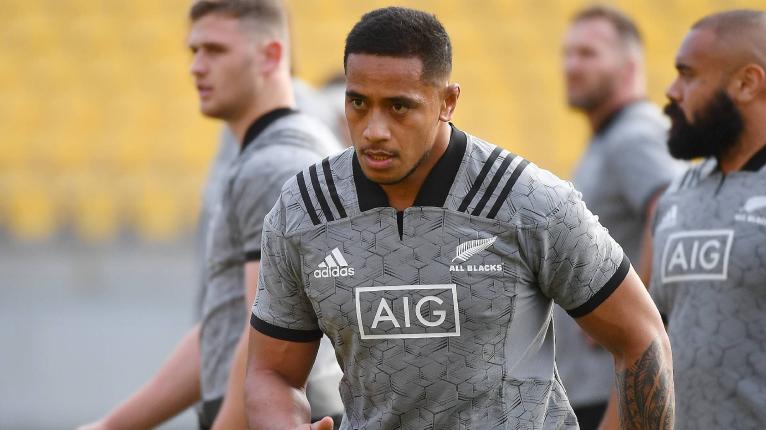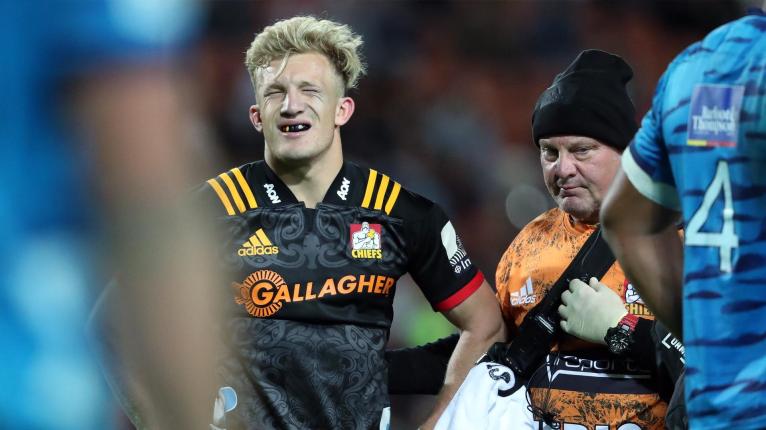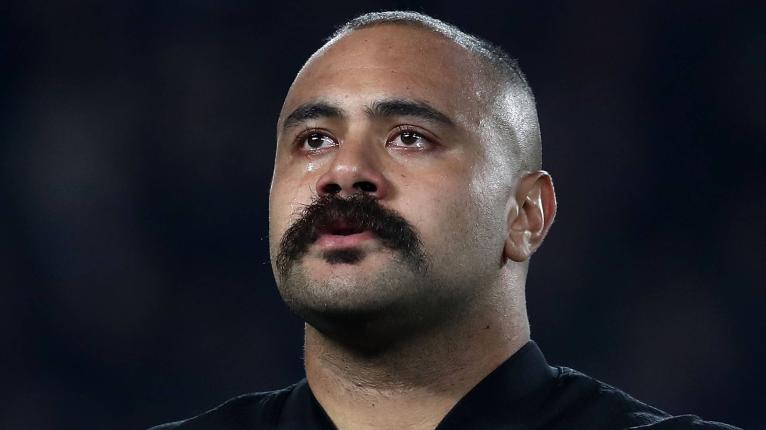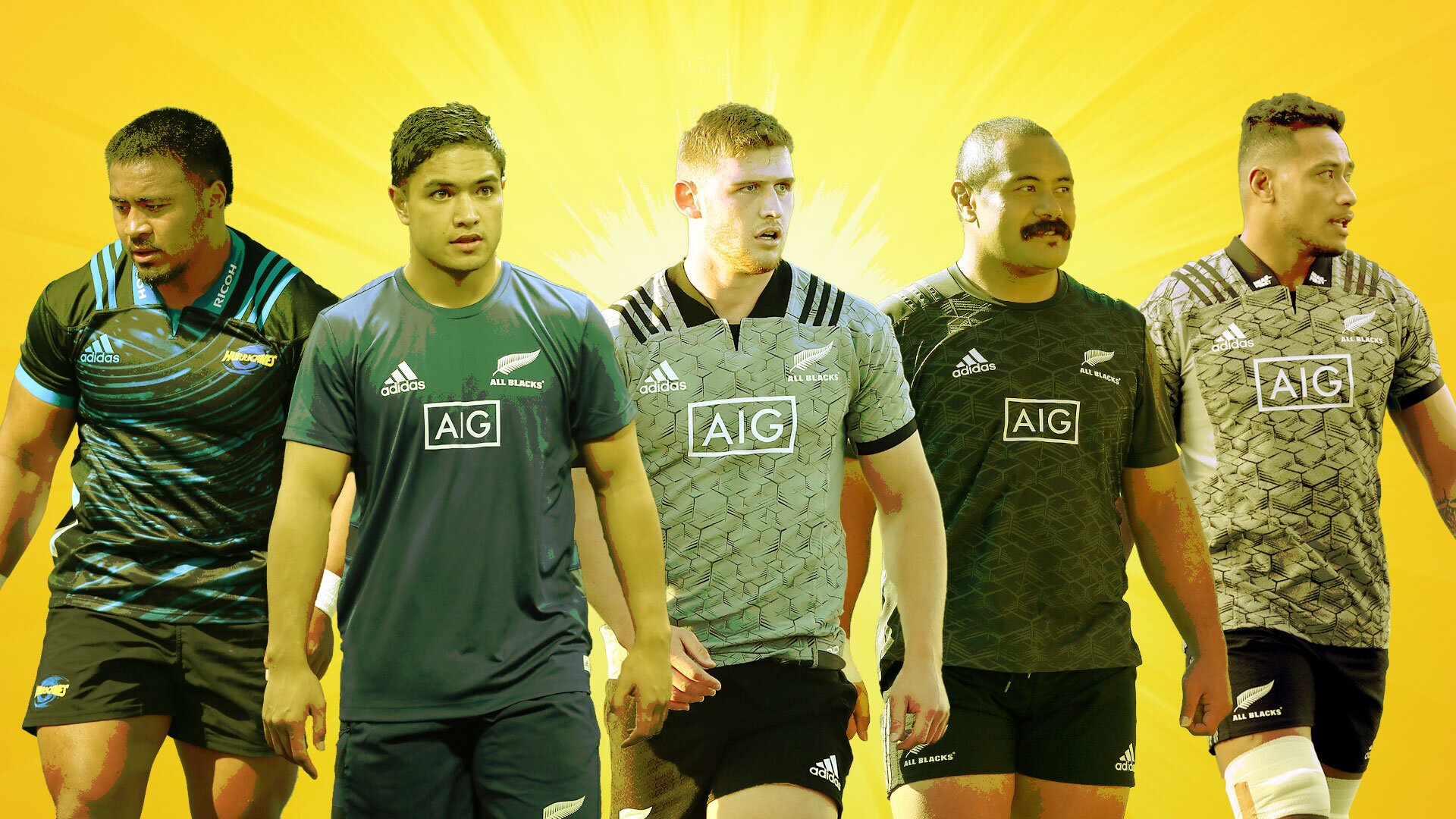The Unlucky Five: Where did the five dropped All Blacks go wrong?

When the All Blacks’ Rugby Championship squad was announced four weeks ago, just over half a dozen hearts were broken up and down the country.
For the likes of Akira Ioane, Waisake Naholo, Luke Whitelock, David Havili, Nathan Harris, Te Toiroa Tahuriorangi and Tyrel Lomax, their omissions from the 39-man squad didn’t spell the end of their World Cup hopes, but it certainly made it a lot more difficult for them to board the plane to Japan in under two months’ time.
Today, that 39-man squad shrunk to 34 players, and with the reduction in squad size came an increase in broken dreams.
Asafo Aumua, Dalton Papalii, Josh Ioane, Shannon Frizell and Karl Tu’inukuafe have all been given the chop by head coach Steve Hansen ahead of the Bledisloe Cup series against Australia.

Those two matches in Perth and Auckland will act as the final auditions before the 31-man World Cup squad is named in a few weeks, and although it isn’t implausible to suggest that any one of that quintet could yet make it to the quadrennial tournament in September, their odds of doing so have been heavily dented.
Even though it’s likely those players could still yet feature at a World Cup either this year or in 2023 thanks to their youth and talent, their culling from the squad should bring with it an overwhelming sense of disappointment for all involved.
So, where did it all go wrong for the unlucky five players?
Well, Aumua’s dropping appears to be the most logical out of the lot, given that he was one of four hookers in the squad, and with one needing to go combined with the fact that he was the only uncapped player in that position, it made sense to release him back to Wellington for the Mitre 10 Cup.
The only other hooker that would have been in contention to get cut would have been Liam Coltman, but with five tests to his name and a proven ability to make a nuisance of himself with ball in hand and at the breakdown, he always had the upper hand over Aumua.
Consequently, Aumua’s removal from the squad has paved the way for Coltman to accompany incumbents Codie Taylor and Dane Coles as the three rakes to head to Japan.
In contrast, one of the more surprising moves is the release of Josh Ioane back to Otago for the provincial season.
Called into the side to cover for Damian McKenzie following his season-ending knee injury, it seemed as if Ioane was being groomed to join Beauden Barrett and Richie Mo’unga as the third-choice first-five in Japan.

Named on the bench for a potential test debut against Argentina in Buenos Aires a fortnight ago, the 24-year-old wasn’t called upon as the All Blacks battled their way to a tense 20-16 victory.
Hansen cited that thrusting the uncapped Ioane into the boisterous cauldron of Estadio Jose Amalfitani with the game in the balance so late in the fixture would have been unfair on the Highlanders pivot.
That led many to assume that he would have been included in the Bledisloe Cup squad, where he could have been blooded at international level before the World Cup.
He has been invited back in a training capacity to watch and learn during the second week of the Bledisloe Cup series, but his exclusion from the trimmed squad means that if Barrett or Mo’unga come down with an injury, the All Blacks will be forced to rely on an uncapped player in one of the most vital positions on the park.
While not everyone expected Ioane to be included in the final World Cup squad, it’s not an ideal situation for the All Blacks to be in after four years of meticulous planning leading into the biggest event in the sport, which makes Ioane’s culling a slight shock.
Continue reading below…
One of the biggest areas that needed reduction was in the loose forwards, and the number of players in that broad position has been slashed from eight to six after Papalii and Frizell were shown the door.
With Frizell a specialist blindside and Papalii able to cover both flanker roles, the duo would have been gunning for the vacant No 6 jersey left free by Liam Squire, who has made himself unavailable for test rugby.
Also contesting for that spot is Vaea Fifita and Luke Jacobson, both of whom have survived the drop.
Jacobson’s retention makes sense, as he adds value through his versatility across the back row, while his debut off the bench against the Pumas emphasised his large appetite for defence with eight tackles from eight attempts.
Although he provides versatility as a second rower as well as a blindside flanker, Fifita’s presence in the squad, however, is one that some would have raised eyebrows at after lacklustre outings against Argentina and South Africa.
He had the chance to make amends for his error-laden performance against the Pumas when he came onto the park against the Springboks as Brodie Retallick’s injury replacement with 20 minutes to play, but without stamping his authority on proceedings in that cameo display, it looked as if his hopes of a World Cup appearance had been dashed.
That hasn’t been the case, though.
Instead, it’s Frizell – who was seemingly the incumbent blindside option in Squire’s absence and bolstered his credentials with a strong offensive showing in the second half last week – and Papalii, who can consider himself unlucky after being handed only three minutes off the pine against South Africa to prove his worth, who have felt the pinch of the All Blacks’ squeeze.
There’s a feeling that Papalii was deserving of another chance against the Wallabies due to a severe lack of game time, especially with the amount of promise he possesses, but, without any injuries, he’ll be unlikely to wear the black jersey this year.
That leaves Karl Tu’inukuafe, a fan favourite among All Blacks supporters who now seems a long shot to cap off his fairytale rise with a World Cup crown this year.
Last year, he was regarded as the second-best loosehead prop in the country behind Joe Moody, and was the premier No 1 during their end-of-year tour to Europe while Moody was injured.
It was unsurprising to see why.
Coming into the side with a reputation as a damaging scrummager, Tu’inukuafe honed his micro-skills with ball in hand, which helped him evolve into a handy contributor in general play.
However, a virus which struck him down at the backend of the Blues’ Super Rugby campaign, as well as the re-emergence of the previously injured Atu Moli, has seen Tu’inukuafe slip down the national pecking order, with Hansen demanding more mobility out of his front rowers.
“It’s not that he’s done anything wrong,” Hansen said on Wednesday.
“It’s just that we’ve said that we want mobile, ball-playing props who can also do their roles.”
It’s an aspect of Tu’inukuafe’s game which Hansen described as one of his not so “strong areas”.
“When you talk about mobility, you’re talking about people’s ability to get back up from the ground and defend and get back and be a ball player,” Hansen said.
“In today’s game you need props that can do more than just scrum and lift in the lineout so that’s been our challenge in the last 12 months that we’ve put to our front rowers and some of them are progressing really well with it and others are struggling.”

With six props still remaining in the Bledisloe Cup side, another big man is set to face the chop when a further three players are culled for the World Cup squad.
That much is expected, but what wasn’t was Tu’inukuafe’s sudden fall from the national side just a year after his rapid and unanticipated rise.
That might make him the unluckiest out of the five players who have been let go by Hansen, and with just a few weeks and a short series of Mitre 10 Cup fixtures left between now and the World Cup squad announcement, time is running thin in those five’s unlikely bids to regain their place in Japan.
In other news:





































